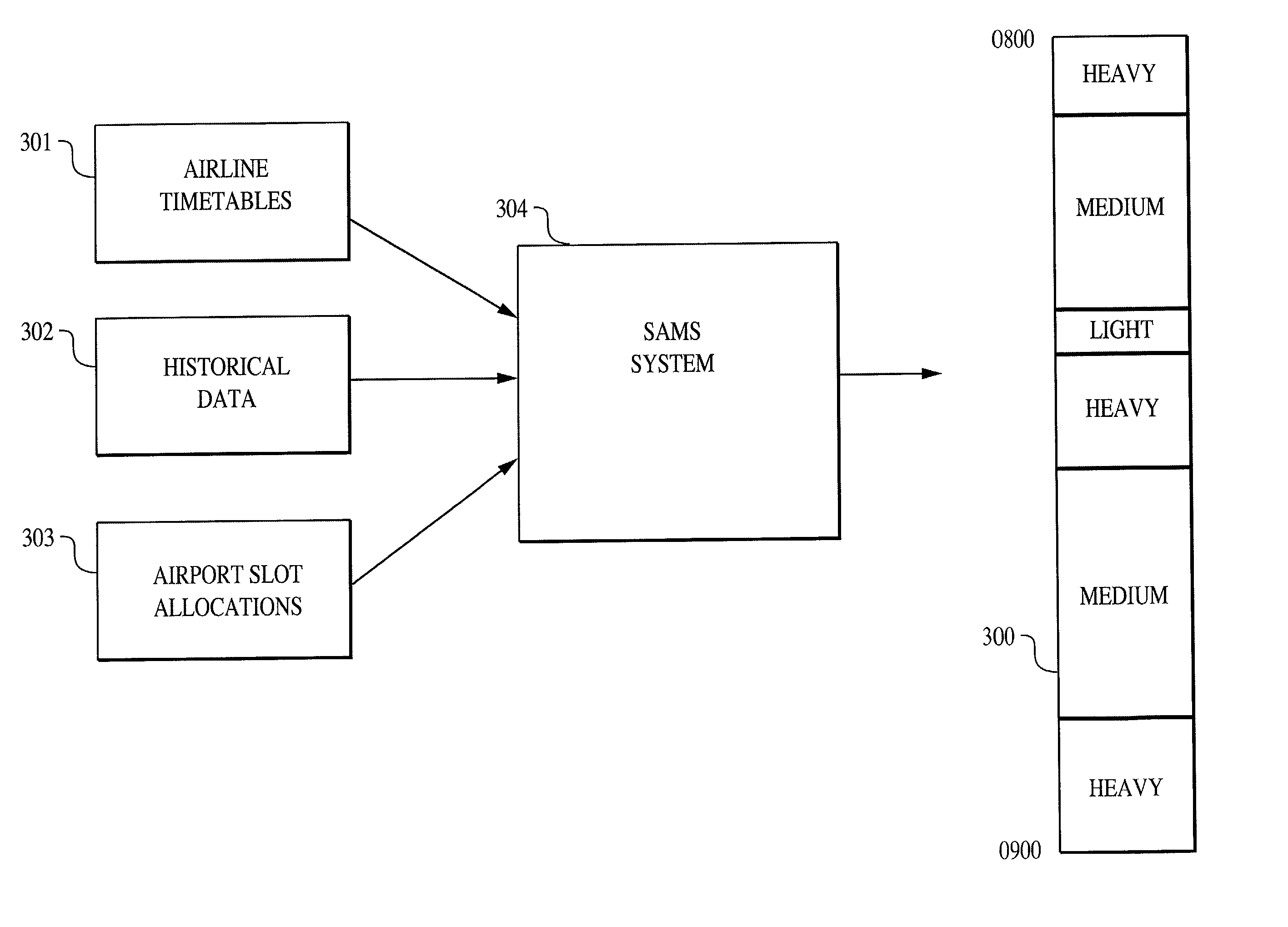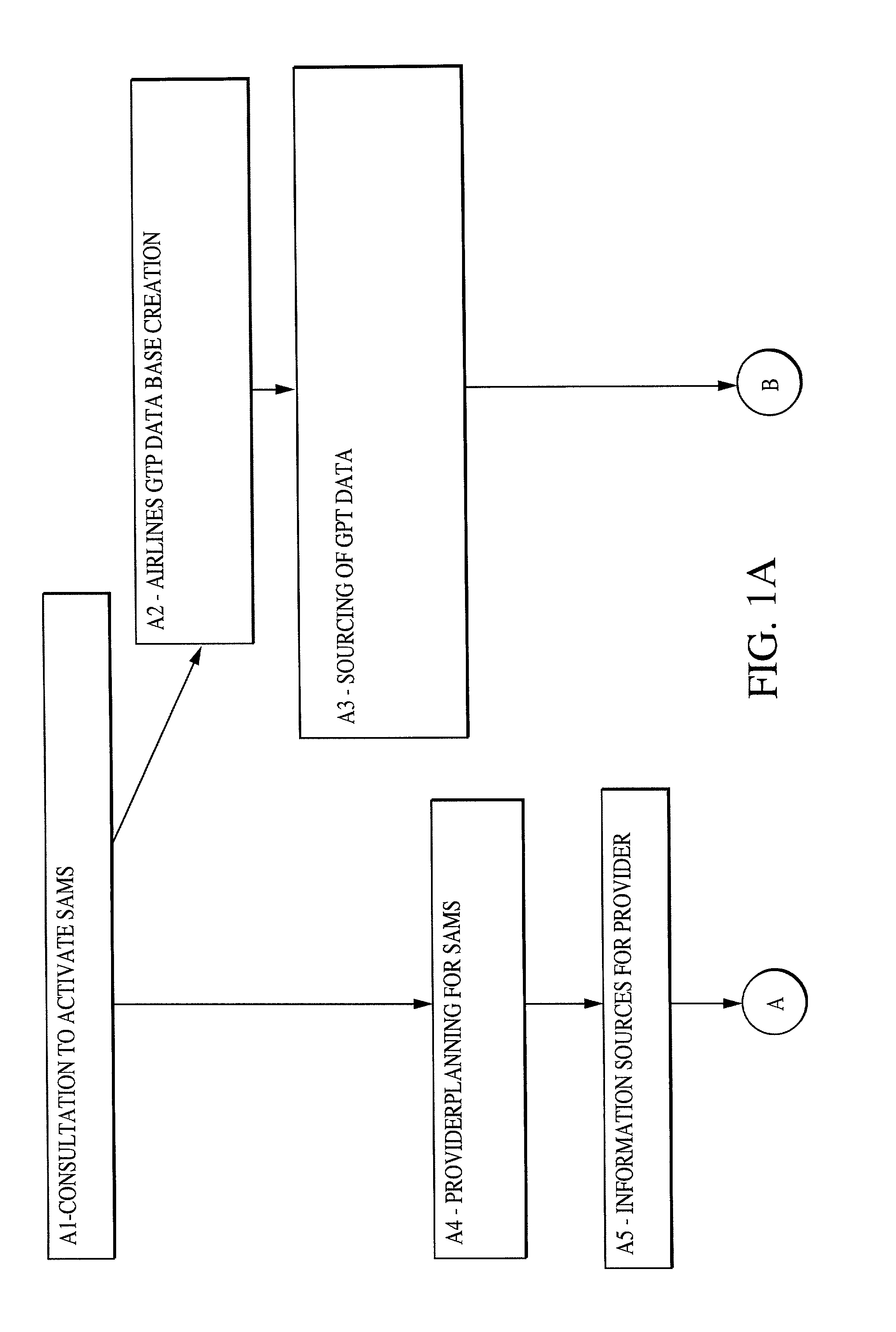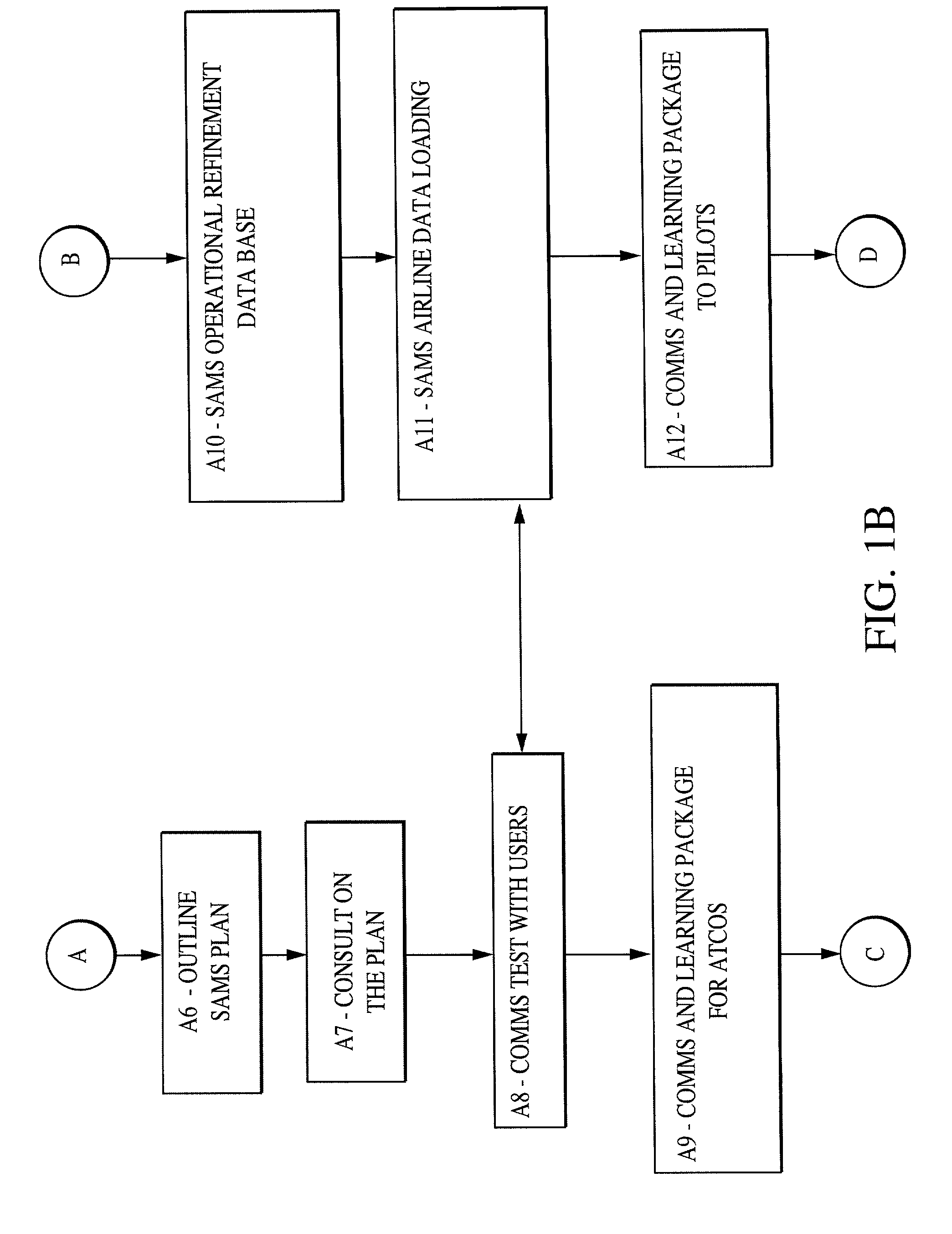Schedule activated management system for optimizing aircraft arrivals at congested airports
a management system and flight technology, applied in the field of aircraft control, can solve the problems of inability to solve the problem of adding additional runways, the arrival process at congested airfields is inefficient for both atc agencies and airlines, and the slot will still not have a direct connection
- Summary
- Abstract
- Description
- Claims
- Application Information
AI Technical Summary
Benefits of technology
Problems solved by technology
Method used
Image
Examples
Embodiment Construction
[0031] The following glossary will be used in describing the invention:
1 Aircrew Aircraft crew involved in execution of technical aspects of flight (e.g. Captain, Co-pilot, Flight Engineer) ATCO(s) Air Traffic Control Officer-individual(s) responsible for management of aircraft. ANSP(s) Air Traffic Service Provider-can be applied to either an air traffic agency or a provider airport authority. Gate to Gate Refers to view of total aircraft journey process from departure parking position to arrival parking position. GPT Ground Progress Time-the estimate of time required before any departing aircraft will be ready to take off. Hold(ing) Delaying process for aircraft awaiting or being positioned into a landing sequence. SAMS Schedule Activated Management System. Schedule Activity of aircraft suggested by a time table or operational plan. Slot Nominated sequencing time for an aircraft; may be issued either by an airport authority related to the Aright to land at@ that airport, or by an A...
PUM
 Login to View More
Login to View More Abstract
Description
Claims
Application Information
 Login to View More
Login to View More - R&D
- Intellectual Property
- Life Sciences
- Materials
- Tech Scout
- Unparalleled Data Quality
- Higher Quality Content
- 60% Fewer Hallucinations
Browse by: Latest US Patents, China's latest patents, Technical Efficacy Thesaurus, Application Domain, Technology Topic, Popular Technical Reports.
© 2025 PatSnap. All rights reserved.Legal|Privacy policy|Modern Slavery Act Transparency Statement|Sitemap|About US| Contact US: help@patsnap.com



